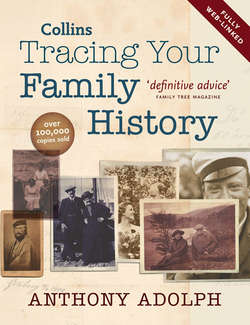Читать книгу Collins Tracing Your Family History - Ryan Tubridy, Anthony Adolph - Страница 65
OLD STYLE AND NEW STYLE
ОглавлениеBritain and Europe used to use the old-style Julian calendar, whereby the year began on Lady Day, 25 March, not the new-style Gregorian calendar, which starts the year on 1 January. The Julian calendar started to die out among lay people in the Tudor period, and by the 18th century it is often hard to tell whether a date is being given in old style or new style.
A member of Pop Gregory’s commision on the calendar pointing out the backslide of the Julian calendar.
Different countries changed to the Gregorian calendar at different times. Most of Western Europe changed in 1582, Scotland in 1600, England and Wales in 1752 and Russia and the Balkans in the 20th century. Therefore, a letter written in France on 1 February 1610 was likely to have been written just under a year before one dated 25 January 1610 in England.
It also means that dates appearing in old records need adjusting to make sense in modern terms. A baptism recorded in a PR on 24 January 1722 would, in modern terms, have taken place on 24 January 1723 because, under the old calendar, New Year’s Day (25 March) had not yet arrived.
To avoid confusion, researchers tend to record the date using ‘double dating’, recording the old-style year followed by the new-style year, i.e. 24 January 1722/3. Never, when you see this, strip out the ‘old’ date and just write 24 January 1723, because someone else may come along, realise that 23 January is before 25 March, not realise that you’ve already adjusted for double dating and write 24 January 1724 instead.
On the International Genealogical and Vital Records indexes (see here), dates are allegedly adjusted but without double dating. Non-conformist registers were using new-style dating well in advance of 1752.
Another difference between the Julian and Gregorian calendars was that the latter used leap years and the former didn’t. By the time Pope Gregory introduced the new calendar in 1582 the lack of leap years had already caused the old-style date to lapse ten days behind the solar year, so he simply ordered ten days to be cut out off 1582, between 4 and 15 October. Because England persisted with the old calendar, it sunk increasingly behind Europe, and was 11 days behind by the 17th century. Therefore, events that share the same dates in different countries, such as the deaths of Shakespeare and Cervantes on 23 April 1616 in England and Spain respectively, actually took place 11 days apart. England and Wales cancelled the days between 2 and 14 September 1752 to catch up with Europe.
